When it comes to city passes and travel cards, it’s usually fairly easy to figure out whether they would be worth it for you or not. For things like the Paris Pass or London Pass, they have a list of the most popular attractions and how much they cost, right there for you to see. The Swiss Travel Pass, however, is shrouded in mystery, or at least it was until I spent several days tracking down all of the prices and benefits.
A great many of the visitors and commenters on my popular page about where to go in Switzerland on a short visit are wondering whether the Swiss Travel Pass is a good deal. Embarrassingly, I’ve always had to answer that I found the pass too confusing to confidently advise people on. Now that has all changed, after literally days of research.
Note: This article was last updated in February, 2024.
Disclosure: This is a reader-supported website and some of the links are affiliate links where a small commission is paid to help keep this site going, but the cost to visitors is the same. The Swiss Travel Pass seems quite expensive at first, so it felt like it might be hard to get your money’s worth out of it. As it turns out, it’s pretty easy to get good value, and it’ll be a good deal for many visitors.
New in 2024
Prices increased an average of 5.9% from 2023 on the Swiss Travel Passes, but the Half Fare Card remains at CHF120, which is where it’s been for many years. Train fares in the country increased by similar percentages so the value is basically unchanged. There were no other notable changes to service or the included attractions and train routes.
>>>Buy the Swiss Travel Pass online
Where to stay in Interlaken and the Lauterbrunnen Valley
Since most people reading this will be visiting the Interlaken area and I get so many questions about it, I decided to write a detailed guide on which area to stay in while visiting this area.
>>>Where to stay in Interlaken or the Lauterbrunnen Valley in Switzerland
I included many huge photos in that post so readers will be able to get a better idea of what each place looks like and they are worth a look by itself.
>>>Lucerne or Interlaken: Which to visit and how long to stay?
The article just above will help you decide on how long to spend in each of Switzerland’s two best tourist areas.
Are you 100% sure where you want to go in Switzerland? This should help
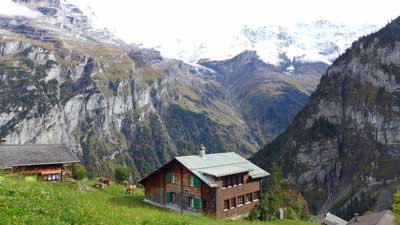
Zurich and Geneva are pleasant but dull. The good news is that Switzerland is packed with amazing sights and none of them are the big cities. If you aren’t 100% locked in yet, please read the article below and I think you’ll enjoy it.
Is the Swiss Travel Pass a good deal? Here's the short version

The bottom line is that the scenery, train journeys, and cable car rides in Switzerland are stunning and not found anywhere else in the world. They are also quite expensive if you pay for them one at a time. So no matter how you visit Switzerland, you are going to be paying quite a bit, or skipping the absolute best things that you’ve come there to see.
With good planning it’s quite easy to get great value out of a Swiss Travel Pass, but it might be a poor choice for those who don’t like to plan ahead. You can easily do a scenic train ride and a cable car in the same day, and still have time to do a scenic hike in the process.
First class or second class? Good news for most people
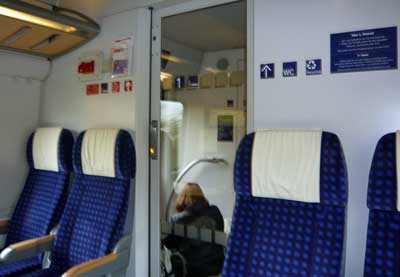
That said, Swiss Trains are literally the nicest in Europe and even the Second Class seats and carriages are nicer and roomier than trains in neighboring countries. The First Class seats are larger and nicer with only 3 across the cabin instead of 4, but honestly Second Class is perfectly comfortable for almost everyone.
Again, First Class on European trains like this is generally popular with business travelers where the company is paying and they need to get work done during the ride, and also senior citizens who don’t want to worry about a carriage full of backpackers. For most of the rest of us, Second Class is more than comfortable enough and the seat width and legroom compare to business-class airline seats. I’m a big and tall guy and I almost always travel in Second because it’s plenty comfortable enough and all the seats arrive at the same time anyway.
The longer you'll be in Switzerland, the better deal a Swiss Travel Pass will be
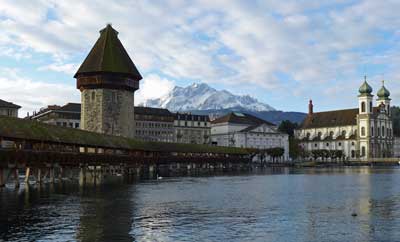
In other words, if you are staying 5 days or fewer, you have to do the math to determine your best option. But if you are spending even 6 or 7 days in Switzerland then the 6-day or 8-day Pass is almost guaranteed to be a great deal and your best choice. Once you have a Swiss Travel Pass you’ll absolutely love the ability to just hop on any train (excellent trains, always on time) and most boats and cable cars without having to worry about the cost. The per-day cost of an 8-day Pass even if you only use 6 of those days is about CHF65, and Switzerland is filled with amazing train rides and boats and cable cars that can get you that much value before noon each day.
Schilthorn (50% discount) and Jungfraujoch (25% discount) are cheaper with a Swiss Travel Pass
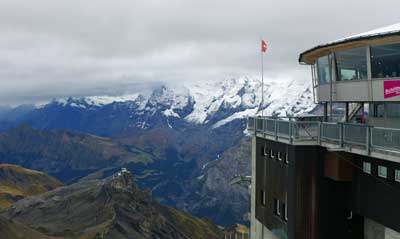
Both of those peak experiences are extraordinary and different from each other. Even so, compared to Jungfraujoch, Schilthorn is also faster and more comfortable on the way up and down. You can enjoy an excellent visit to Schilthorn in 4 hours or so (or a bit longer if you eat at the spinning Piz Gloria restaurant at the top), while a visit to Jungfraujoch requires closer to 6 hours.
NOTE: Schilthorn closes for maintenance for a week or two in late November most years.
Consider the Swiss Half-Fare Card instead
If you AREN’T going to be doing two or more of the long (and expensive) scenic train trips, you will get much better value out of the Swiss Half-Fare Card, which is explained a bit below.
Mt Rigi, near Lucerne, is 100% covered by the Swiss Travel Pass
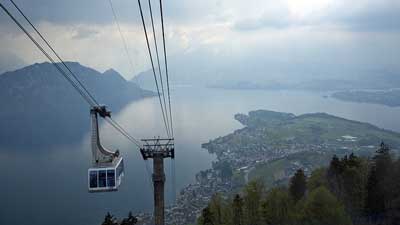
Is a Swiss Travel Pass right for you?
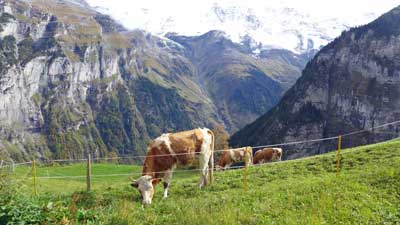
Most people only visit Switzerland for 5 or 6 days at most, so the 3-day and 4-day passes are the ones to focus on. But if you are staying for 8 days or more, those longer passes are almost certainly a great deal for you.
Long story short, if you plan on doing 2 of the more expensive scenic trains and the Jungfraujoch railway or the Schilthorn cable car, then the pass will save you money. Switzerland is expensive, but it’s worth it, and the travel pass can help make it a bit more affordable.
What the Swiss Travel Pass includes
- Free rail travel on normal trains and most scenic trains
- Discounted travel (about 50%) on popular tourist mountain trains
- Discounted travel (about 50%) on popular tourist cable cars
- Free travel on public transport in 75 towns and cities
- Free entry to around 500 museums in Switzerland
The Swiss Travel Pass covers the fare on the most popular scenic and panoramic trains. You can choose a normal seat in a regular carriage for no additional cost, but there is a supplement of CHF8 to CHF49 for a reserved seat in one of the special panorama carriages on these routes.
Prices of the 2024 Swiss Travel Pass
1st Class
- Adult 3-day Pass: CHF389
- Youth (4 to 25) 3-day Pass: 274
- Adult 4-day Pass: 469
- Youth (4 to 25) 4-day Pass: 330
- Adult 6-day Pass: 602
- Youth (4 to 25) 6-day Pass: 424
- Adult 8-day Pass: 655
- Youth (4 to 25) 8-day Pass: 469
- Adult 15-day Pass: 723
- Youth (4 to 25) 15-day Pass: 512
2nd Class
- Adult 3-day Pass: CHF244
- Youth (4 to 25) 3-day Pass: 172
- Adult 4-day Pass: 295
- Youth (16 to 25) 4-day Pass: 209
- Adult 6-day Pass: 379
- Youth (16 to 25) 6-day Pass: 268
- Adult 8-day Pass: 419
- Youth (16 to 25) 8-day Pass: 297
- Adult 15-day Pass: 459
- Youth (16 to 25) 15-day Pass: 328
Swiss Travel Pass Flex
This version costs a bit more, but you don’t have to use the travel days consecutively. It’s a great option for anyone who won’t be taking longer train rides each day.
- Adult 3 Flex days in 1 month (1st Class): CHF445
- Adult 3 Flex days in 1 month (2nd Class): 279
- Adult 4 Flex days in 1 month (1st Class): 539
- Adult 4 Flex days in 1 month (2nd Class): 339
- Adult 6 Flex days in 1 month (1st Class): 644
- Adult 6 Flex days in 1 month (2nd Class): 405
- Adult 8 Flex days in 1 month (1st Class): 697
- Adult 8 Flex days in 1 month (2nd Class): 439
- Adult 15 Flex days in 1 month (1st Class): 755
- Adult 15 Flex days in 1 month (2nd Class): 472
Where to buy the Swiss Travel Pass
The Swiss Half-Fare Card – A better option for many visitors
Far less confusing than the Swiss Travel Pass, you can instead get a Swiss Half-Fare Card, and it will be a better deal for many travelers. The price is lower and it’s much easier to do the math, and the discounts are greater on some things as well.
- Swiss Half-Fare Card for 30 days: Adults – CHF120 or US$129
What you get:
Those who buy the Swiss Half-Fare Card will get 50% discount on all trains, buses, and boats in Switzerland for up to 30 days, as well as 50% off all public transportation in 75 cities and towns.
>>>Buy the Swiss Half-Fare Card
Why the Half-Fare Card is a better deal for many
While the Swiss Travel Pass is a great deal for those doing many of the expensive scenic journeys and mountain sights within a few days, it’s not good value for those who are doing fewer of the expensive trips and/or those who are staying longer. Also, the Swiss Travel Pass only provides a 25% discount on the amazing Jungfraujoch Railway, which costs between CHF120 and CHF224 return depending on your starting point, while the Half-Fare Card provides a 50% discount.
The math is simple as well. You can just add up the cost of the trains, boats, and buses you’ll be taking while in Switzerland, and if the total is more than CHF240 or so, the Half-Fare Card will save you money.
Example itinerary:
- Zurich to Interlaken train (2nd Class): CHF50
- Schilthorn Cable Car: CHF112
- Jungfraujoch railway from Interlaken: CHF205
- Interlaken to Lucerne train (2nd Class): CHF33
- Mt Rigi roundtrip from Lucerne: CHF84
- Engelberg (near Lucerne) to Mt. Titlis Cable Car: CHF92
- Lucerne to Zurich train (2nd Class): CHF25
Total per person: CHF601
Total with Half-Fare Card (including price of card): CHF420.50
It would be tough to do all of those things in 4 days, although it is possible. If you bought a 4-day Swiss Travel Pass here is how it adds up:
4-Day Swiss Travel Pass: CHF259
Supplements for Schilthorn, Jungfraujoch, and Mt. Titlis: CHF203.25
Total cost: CHF462.25
Bottom line on the Swiss Half-Fare Card
Since the Half-Fare Card lasts 30 days and provides a larger discount on Jungfraujoch, it is better value for visitors who want to include that scenic top-of-Europe rail journey on their trip. The discounts also add up more quickly on Schilthorn and Mt. Titlis trips, just to name two examples, and you don’t have to take many longer rail journeys to get value out of the Half-Fare Card.
Swiss Saver Day Pass (A one-day unlimited travel pass)
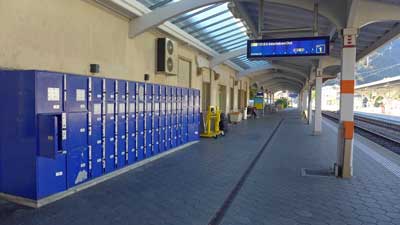
If you buy the Saver Day Pass at least 21 days in advance (and up to 60 days in advance) the 2023 cost is:
- 2nd Class (with Half Fare Card): CHF29
- 1st Class (with Half Fare Card): CHF82
- 2nd Class (with no Half Fare Card): CHF52
- 1st Class (with no Half Fare Card): CHF97
Once you research the normal cost of Swiss train fares you’ll see that the above prices are a very good deal for anyone riding more than 150 kilometers or so in a day. If you are just going, for example, from Zurich to Lucerne or Interlaken on a day, it’ll be cheaper to just buy that ticket individually. But if you are going from Geneva or Montreux to Interlaken or Lucerne then the Saver Day Pass will be much cheaper. Better still, you can use a Saver Day Pass to go from Interlaken to Geneva and back on the same day on the Goldenpass line and returning on the faster train through Bern, and it will still all be included for free.
If you don’t buy a Saver Day Pass at least 14 days in advance it’s more expensive, and if you only buy 1 to 3 days in advance it’s VERY expensive, so the key is to buy early. This is all confusing, but the Saver Day Pass should be a great option for many people only in Switzerland for one to three days.
Popular Swiss panorama scenic trains
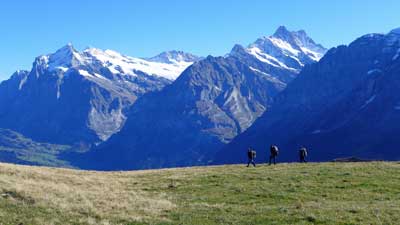
- Glacier Express
- Route: Zermatt to St. Moritz
- Train type: Panorama
- Journey time: 8 hours 3 minutes
- Distance: 291km
- 1st Class fare: CHF272
- 2nd Class fare: CHF159
- Compulsory seat reservation fee: CHF44 or 49
- Supplement for Swiss Pass holders: 13 to 33 for panorama carriage
- Bernina Express
- Route: Chur to Tirano and Lugano
- Train type: Panorama and bus
- Journey time: 4 hours 13 minutes and 3 hours 10 minutes
- Distance: 148km and 90km
- 1st Class fare: CHF113
- 2nd Class fare: CHF66
- Compulsory seat reservation fee: CHF32
- Supplement for Swiss Pass holders: 10 to 14 for panorama carriage
- GoldenPass Line
- Route: Lucerne to Montreaux
- Train type: Panorama
- Journey time: 5 hours 8 minutes
- Distance: 191 km
- Prestige Class fare: CHF131
- 1st Class fare: CHF96
- 2nd Class fare: CHF56
- Supplement for Swiss Pass holders: 8 to 15 for panorama carriage
- Gotthard Panorama Express (formerly Wilhelm Tell Express)
- Route: Lugano or Locarno to Lucerne
- Train type: Panorama and boat
- Journey time: 5 hours 21 minutes
- Distance: 182 km
- 1st Class fare: CHF164
- 2nd Class fare: CHF135
- Supplement for Swiss Pass holders: 39 to 49 for panorama carriage
- Swiss Chocolate Train
- Route: Montreux to Broc round trip
- Train type: Panorama or First Class
- Journey time: X hours X minutes
- Distance: 82 km
- 1st Class fare: CHF99
- 2nd Class fare: 89
- Supplement for Swiss Pass holders: 39
Popular Swiss scenic and theme trains
The scenic trains below are also extremely popular as sightseeing journeys rather than just as transportation, but can be used as both.
- Jungfraujoch round trip
- Route: Interlaken to Jungfraujoch
- Train type: special mountain train
- Journey time: 4 hours 41 minutes, round trip, plus time on top
- Distance: 73 km
- 1st Class fare: N/A
- 2nd Class fare: CHF224
- Supplement for Swiss Pass holders: 147 (so, a saving of CHF77)
- Gornergrat Railway
- Route: Gornergrat Railway
- Train type: Cog railway
- Journey time: 44 minutes return
- Distance: 10 km
- 1st Class fare: N/A
- 2nd Class fare: CHF90
- Supplement for Swiss Pass holders: 45
- Rigi round trip
- Route: Lucerne to Rigi
- Train type: Cog railway
- Journey time: 3 hours 25 minutes, plus time at the top
- Distance: 58 km
- 2nd Class fare: CHF78
- Supplement for Swiss Pass holders: None (this one is free with the pass)
- Mt Rigi Excursion (one-way and walk down)
- Route: Lucerne to Mt Rigi
- Train type: cogwheel train and/or cable car
- Journey time: 45 minutes up
- 1st Class fare: N/A
- 2nd Class fare: 49
- Supplement for Swiss Pass holders: 0
- Lotschberg Mountain Route and Centrovalli
- Route: Bern to Locarno
- Train type: Narrow gauge
- Journey time: 4 hours 40 minutes
- Distance: 212 km
- 1st Class fare: CHF158
- 2nd Class fare: CHF90
- Supplement for Swiss Pass holders: 5
- Jura round trip (Watchmaking Tour)
- Route: Neuchatel through Jura
- Train type: Regular
- Journey time: 3 hours 0 minutes
- Distance: 143 km
- 1st Class fare: CHF168
- 2nd Class fare: CHF108
- Supplement for Swiss Pass holders: 0
- Pre-Alpine Express
- Route: St. Gallen to Lucerne
- Train type: Regular
- Journey time: 2 hours 15 minutes
- Distance: 146 km
- 1st Class fare: CHF83
- 2nd Class fare: CHF47
- Supplement for Swiss Pass holders: 0
- Jura Foot Line
- Route: Basel to Geneva
- Train type: Regular
- Journey time: 2 hours 40 minutes
- Distance: 248 km
- 1st Class fare: CHF132
- 2nd Class fare: CHF75
- Supplement for Swiss Pass holders: 0
Popular Switzerland cable car rides
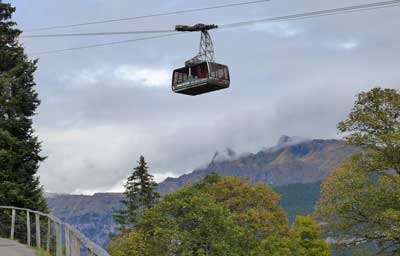
- Schilthorn
- Route: Stechelberg (Lauterbrunnen) to Schilthorn
- Train type: cable car
- Journey time: 1 hour
- 2nd Class fare: CHF108
- Supplement for Swiss Pass holders: 54
- Engelberg to Mt. Titlis cable car
- Route: Engelberg to Mt. Titlis
- Train type: cable car
- 2nd Class fare: CHF96
- Supplement for Swiss Pass holders: 46
The Swiss Travel Pass also includes free museum admission, but…
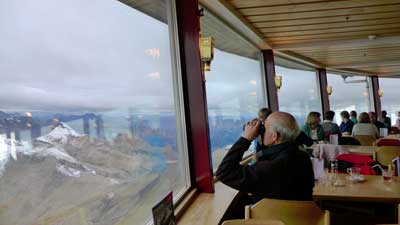
The problem is that the museums are only free on valid travel days, and almost no one would visit more than one or two museums with a Swiss Travel Pass. The trains and cable cars are so expensive that the pass gives very good value to cover those, so you don’t want to waste precious sightseeing time walking through a museum that only costs CHF10 anyway.
In other words, calculate the value of a Swiss Travel Pass on the travel savings only, and if you visit a museum here or there, then great. Most people are better off trying to squeeze in an additional train ride each day, and ignoring the museums. Switzerland is all about the outdoor scenery. As nice as the museums may be, they are not why you are there.
The pass includes free public transport in most Swiss cities
Similar to the free museum part of the offer, it’s best to ignore or minimize the value of free public transportation. It could be helpful in Zurich, but in most other Swiss tourist towns you won’t need much public transport. In fact, in Interlaken, each hotel or hostel guest automatically gets a card for free public transportation within the town (including between the two train stations).
So you might use a ride or two each day on public transport, but that won’t add up to much in terms of value of your Swiss Travel Pass.

Hi Roger,
Slight change in plan. Now we plan to go from paris to Murren by train(as suggested by you)..stay 2 nights in Murren & one Night in Lucerne. The journey from paris to murren looks quite tough,(Paris-Gare de Lyon to Mürren BLM
via Basel SBB to Interlaken Ost to Lauterbrunnen BLM to Grütschalp ) but i guess the beauty of staying amongst the mountain ranges in murren will be worth it.i can see that paris to murren costs about 220 chf. which involves plenty of changes within switzerland. How can i use a half fare card to reduce this cost.Can i buy the half fare card from paris, and then apply it while booking my train tickets from paris to murren. Or do i hae to book my train to basel and then buy a half fare card and use it for the remaining part of my journey to murren. Sorry if i am sounding stupid, but i’m quite new to the train system of switerland and europe in general.
Ankit
ANKIT,
That’s not a stupid question at all. Yes, you can book a train from Paris to Basel and then use the Half Fare Card to book the trip within Switzerland. I believe you’d have to change trains in Basel regardless, so it really shouldn’t be more complicated. And yes, I do believe that staying in Murren or Gimmelwald is easily worth the extra hassle of getting there, even after a long day of traveling. It’s magical staying in a car-free village on the side of a stunning mountain like that. Let me know if you have any other questions. -Roger
Hi Roger,
Wow thank you for helping us tourists! You are fantastic!
My family and I (2 adults and 2 kids) will be in Switzerland in Octrober for 7 days. I have booked 3 days in Lauterbrunnen (just to relax and hike (and go to the waterfall) and enjoy the beauty) and 4 days in Lucerne as a base to take panaromic train rides, cruises and Mt. rigi/titlis. My question is:
1. What are the best scenic train rides that we could take and come back to Lucerne?
2. If thats not viable, Should we stay in the town where the train stops? My husband , though, doesn’t want to unpack/pack too much as its hard with 2 kids.
3. Would a half fare card cover kids (as the swiss pass is free for kids). With our itinerary, would a swiss pass be better than?
Any other suggestions would be greatly welcomed. Thank you!
Kas
Kas,
I lived in a town in Turkey called Kas for a bit over a year, interestingly enough. Your plan sounds very good.
1. You could take part of the Golden Pass train west from Interlaken and back to Lucerne. But in my opinion, pretty much every train ride in Switzerland is very scenic. They have those certain named scenic train routes, some with special panoramic carriages, and I’ve done a couple of them. However as I mentioned, every train ride is very scenic so I generally just recommend that people book train rides to and from the places they want to visit, and enjoy the scenery along the way.
2. Taking a train 5 hours in one direction and then taking it right back the other way can be very tiring so I really wouldn’t recommend it. In some cases you can take a different route back though. With the Golden Pass one of the most scenic parts is the ride through the valley on the way to Montreux, but the faster train goes through Bern, so you could do one in each direction. With young kids I think I’d avoid those long train days though, and just find a place you want to visit, and come back at the end of the same day.
3. You can get a free Swiss Family Card, which allows a free child with every paid adult, even with a Half Fare Card. I think if you order a Half Fare Card online that you can request a Family Card with it, or you can get it in Switzerland. I think the Half Fare Card will be best for you, unless you decide to take more long train rides than you have mentioned so far. Have a great trip. -Roger
Hi Roger,
Your Article was very informative about Switzerland Sight seeing.
I Will be visiting Switzerland for 4 days starting from 3rd august with the base location as Lucerne. Below is my itinerary
Day1:Check in to Lucerne hotel 12 pm.Visit Mount rigi and come back to Lucerne hotel
Day 2: Mount Pilatus and Mount Titlis and back to lucerne hotel
Day 3: Zuriche Sight seeing and come back to Lucerne hotel.
Day 4: Lucerne Sight seeing(Lion monument,Chapel bridge etc.,)
Day 5: Checkout Lucerne hotel and Reach Zurich airport.
Can you Please suggest if we should take 3 day Swiss pass or half fare card and also if we can include any other places in our itinerary
Thanks
Prasad
Prasad,
It looks like the Half Fare Card would save you more money. The other comment I’ll make is that Zurich isn’t really a very interesting tourist city, even for a day trip. You’ll be in the most beautiful part of Europe, so I wouldn’t take a full day going to a bland and extremely expensive city unless you have some specific things you want to see there. I’d spend the day in and around Interlaken instead, which is really the heart of the most famous sights such as Schilthorn and Jungfraujoch.
Even if you go to Interlaken instead, I think a Half Fare Card is still the way to go. Let me know if you have any other questions. -Roger
Hi Roger.
I intend to visit the Matterhorn ( by train till Zermatt and after using the cable ). I will stay in Interlaken and I want to use the Glacier Express, too.
Can you tell my a beautiful itinerary ? And of course, one can be done in one day…
I’ve researched and are still confused: it is ok to use the train from Interlaken to Tasch and from here to take the Glacier Express to Zermatt ? Or is it better to go from Interlaken to Brig and take the Glacier Express to Zermatt ?
Best Regards,
Maria
Maria,
I’m not sure I understand your question about an itinerary, and I prefer not to type out itineraries from scratch for people anyway. All of those train rides in Switzerland are incredibly scenic, so I don’t think it’s necessary to focus just on the routes with names. The fastest train from Interlaken to Zermatt requires a change in Spiez and then another in Visp. That takes a bit over two hours to Zermatt. It might be best to go that way in the morning, and then if you have time on your way home you can go back through Brig. You’ll have so much stunning scenery all day that you may just want the fastest route back to Interlaken. Best of luck with this. -Roger
Hi Roger.
I will buy a Swiss Travel Card. For my child I will take the Family Card.
I have a few questions:
– for trip from Kleine Scheidegg to Jungfraujoch must I pay the ticket for my child ?
– which is the route from Interlaken Ost to Jungfraujoch ? Interlaken Ost – Grindewald – Kleine Scheidegg – Jungfraujoch and return to Wengen – Lauterbrunnen ?
– which is the best way to visit Murren if I go to the Jungfraujoch ?
Thank you !
Ana-Maria,
Yes, the child ticket will cost half what an adult ticket will cost to Jungfraujoch. It’s a special private train so they don’t allow free travel for families.
Those are the two routes to reach Jungfraujoch. Many people like to go up one and come down the other.
You can reach Murren from Lauterbrunnen train station. You take a bus parked outside the station right after every train from Interlaken Ost arrives to the cable car station in Stechelberg, and it also passes a very nice waterfall on the way. You take the cable car up one stop to Gimmelwald and then cross the platform for a cable car up one more stop to Murren. You can buy a ticket that covers the whole journey, including train, bus, and cable car, at any station. Have a great trip. -Roger
Thank you very much Roger. This is so helpful as Ankit said specially for clueless tourists. I have one more question, I am arriving at Zurich at 6am so on my first day should I take a tour of Zurich and go to Interlaken or should I take a trip to Bern and go to Interlaken from Bern. With this Itinerary we will be staying in Interlaken for first nights and in Lucerne on 4th night. Is that right or do you suggest something else?
Ritu,
Zurich is obviously a far larger city, but there are no particularly interesting sights there. If someone has half a day or a day or even two to spend there, they would find it pleasant and enjoyably, but it’s a bit boring compared to the natural sights. Bern is actually quite interesting and much more photogenic. If you want to tour a city then Bern is the one to pick. The trains run early to late, so you can go anywhere you want at almost any hour.
Your itinerary looks quite good and I don’t have any other suggestions. -Roger
Thanks Roger,
for your reply to my ques as well as Ritu’s ques as i see she is planning to use the same itinerary. So you cleared my doubts about lucerne as well. I just want to thank you very much for extending all your help to clueless travelers who (with your help, are able to make the best out of their holiday. Nobody wants to spend so much money on a holiday and realize that they have left out many important/interesting things. With your help we are able to get the most out of our holidays… thank you once again for everything.
Ankit
Hi Roger,
I see you are the guy to go for any Swiss Travel. Me, my husband and my 8 year old daughter are arriving at Zurich on 7th Nov and leaving on 11th. We have full 4 days to roam around as much as we can and also would like to take some peaceful time to enjoy the beauty of Alps. Can you please suggest us the best itinerary and pass if applicable. If possible we would like to cover the glacier.
I saw this itinerary in one of your comments and was wondering if this is a good start:
Day 1 – Zurich airport – Interlaken Ost
Day 2 – Interlaken Ost – Murren – Gimmelwald – Lauterbrunnen – Interlaken
Day 3 – Interlaken Ost – Jungfraujoch – Interlaken Ost
Day 4 – Interlaken Ost – Lucerne
Day 5 – Lucerne- Zurich airport”
Thanks,
Ritu
Ritu,
I think an itinerary very much like that one would be a fantastic way to combine the Alps with at least a look at Lucerne, which is also lovely. In the smaller mountain towns such as Gimmelwald and even Murren, some of the hotels close from mid October, which is the end of the busy summer season, and open in mid December for the start of the ski season. There will be plenty of other hotels open, but don’t be surprised if it looks like the selection is smaller than you were expecting.
On Day 2 the highlight would be a trip all the way up to Schilthorn as long as the weather up there is decent. Jungfraujoch is similar in that it’s amazing in clear weather and not really worth it in fog or overcast. If you did an itinerary like this you’d be best off getting the Half Fare Card, which allows for one free child with each paid adult using the free Swiss Family Pass that you can get once you get there or perhaps even online.
On Day 4 you’d want to reach Lucerne early enough to take a 2-hour cruise on the river, which stops at various little towns in the area. After that you can enjoy the charming Lucerne town center and perhaps take a look at the lion statue. Let me know if you have any other questions. -Roger
Good day Roger… a great name by the way, the name of my father 😉
Trying to figure out if a Swiss Half-Fare or graubündenPASS is the best way to go for our trip to Germany and Graubünden-Switzerland. Also, any tips regarding the Germany train tickets would be greatly appreciated.
Three Adults
14-20/21 JULY
Arriving Zurich: 14 July; Early AM. Travelling same day to Titisee-Neustadt, GERMANY via Schaffhausen route.
Titisee-Neustadt, Germany: 14-15 July. Early AM on 16 July returning to Zurich then onward to Poschiavo (renting a house there).
Poschiavo will be used as a home-base from 16-20/21 July.
Return to Zurich on 20 or 21 July for evening flight departure.
We will be taking daily train rides on the RhB (open-air scenic carriages) to visit Cavaglia, Lake Palu, Diavolezza, Pontresina, St. Moritz, Sils-Maria, Fex Valley, and Bregaglia in the Upper Engadine and a one-day trip to Scuol-Tarasp, Ardez, and Ftan in the Lower Engadine Valley. These visits will include a few short bus rides; least one boat ride (Lake Sils); and two or three cable car rides.
Please advise.
Cheers and respects,
Scott,
Rogers of the world unite! To be honest, I’d never heard of the graubündenPASS until just now. Since most of the top sights for first-time visitors to Switzerland are in the western two-thirds of the country, I haven’t explored a pass for the eastern area. I’m only familiar with a few of the places on your list, so you are digging pretty deep and I hope you’ve visited the major Swiss highlights before, or plan to eventually. If most or all of those places are in Graubünden, then that pass looks ideal.
However, if several of those places are outside that region then you might also consider a Half Fare Card in addition. It appears that you can even save about CHF30 on the graubündenPASS if you buy the Half Fare Card. Sorry I don’t know more about the specifics of the places on your route. Hopefully you can find the fares on sbb.ch and make the right choice.
As for German train tickets, you’ll obviously want to get them on bahn.de, and the earlier you buy them the cheaper they should be. The only tricky thing is if you are using a Half Fare Card or even that other one, it will cover much or all of the train ride within the Swiss border. In most cases you can book a separate ticket for just the portion of a train in the other country. So you might be able to get 50% off the train up to the Swiss border, and then pay the advance purchase fare for the German portion, and hopefully you’d be able to keep the same seat. I’ve done that for major exit points such as Basel or Salzburg, but not for the route you’ll be going. Best of luck on this. -Roger
Hi Roger,
Thanks for your advise. the trip to schilthorn from interlaken is explained as:
1) Interlaken to Lauterbrunen via train.
2) Lauterbrunen to Stechelberg Schilthornbahn via bus
3) Board the cable car here. switch to another cable car in Gimmelwald
before we reach Mürren.
4) We board the cable car and switch to another one in Birg. Then we reach the summit of the Schilthorn.
Since we are passing by these villages on our way to & from schilthorn, is it possible we spend some time exploring these places on our way back from schilthorn to interlaken, instead of keeping separate days for visiting these places and separate day for going to schilthorn.
In other words, will going to schiltihorn consume too much time and energy for us to visit these places(murren, gimmelwald, lauterbrunnen) on our way back to interlaken. If it is possible to go to these places, we may be able to cut out one day from trip in Switzerland.
Thank you very much
Ankit
ANKIT,
Yes, that is exactly how the trip to Schilthorn works, and you can pay for it all with one ticket from any train station or ticket booth in Switzerland. From Interlaken to Schilthorn it takes around 2 hours. If you are in a hurry you can enjoy the views in 30 minutes and maybe take a short visit to the included James Bond attraction, which is more interesting than it might sound. But if you have a bit more time I’d recommend getting lunch at the Piz Gloria revolving restaurant up there. Amazingly enough, the food prices are similar to what you’d find at a restaurant in Interlaken. That still means that main courses start at a bit over US$20, but considering the location that will feel like a bargain.
Once you decide to catch the cable car back down it would take you another two hours or so to reach Interlaken again. But I highly recommend getting off at Murren on the way down (as long as the weather is decent) and walking around there for a bit before walking down the hill to Gimmelwald, which takes about 20 minutes. From there you can catch the next cable car down (they leave every 30 minutes), using the same ticket you started with. Murren and Gimmelwald are both really lovely places to visit, so being able to do it as part of your Schilthorn day makes the most sense. Let me know if you have any other questions. -Roger